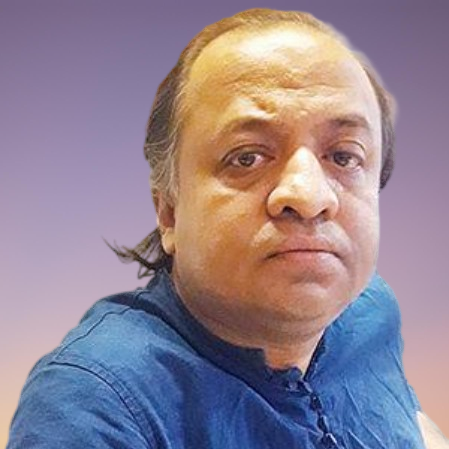Culture

Wherever I met him, Jahangir bhai (Syed Jahangir) used to warmly receive me and inquire after my writings. Several times I visited his apartment-cum-studio in Sir Syed Road, Mohammadpur; talked about his paintings of several decades, styles, use of medium and overall contemporary art of the country. The adda lingered into late night with drink and different palatable menus. Many of us regards him as a snob- he was very formal in his lifestyle. He was closely associated with civil servants, senior diplomats, intellectuals, poets and people from different segments of the society.
Syed Jahangir was greatly influenced by American Expressionism and his themes are closely connected to rural Bengal and its rivers. Harvest, fishing on a moonlit night and paddy fields are frequent themes in his paintings. His works feature figures and objects that look more polished. The painter earned prominence as a painter in the '50s. He was the student of third batch of the then Dhaka Art College (now Faculty of Fine Arts, University of Dhaka), which was established in 1948.
While I conversing, I got to know that a young Jahangir was fascinated by the statues of deities during puja festivals in the village. Jahangir recalled, "I was amazed to see the style of making clay gods and goddesses of different sizes. I concentrated completely on the craft these artisans put into the making of Durga and followed right up till the immersion of the idol in the river.
"My uncle Jalaluddin Hashmi, Deputy Speaker of the then East Pakistan, had a domestic help who was expert in drawing. When he did portraits, I was amazed at his creativity. I was very close to him and started to learn from him. I was the youngest son of my parents. I liked to watch my mother as she stitched and I would often join her. By this time, I was making portraits on the walls in the backyard of my village home. In 1950, I passed the matriculation examination from B. Dey Institute of Satkhira district. After passing the examination, I went to my brother's place, Sikandar Abu Zafar at Calcutta (now Kolkata)." Zafar was a famous poet, publisher and composer, and was very close to Zainul Abedin.
Jahangir continued, "Because of my intense interest in drawing, my brother suggested that I seek admission to Dacca Art College. Zafar phoned Zainul Abedin. At that time the institute had few students. My father was not happy because he had great expectations from me and feared there was no future in taking up art as a profession. However, there was no frustration as far as earning went because my elder brother Zafar was very close to lots of publication houses. So I did some illustration work for book covers in my second year."
Jahangir liked to portray the countryside and its various aspects. Paddy fields, riverine areas, fishing nets, golden harvests, open sky, grasshoppers flying over a green field, boats and fishermen are recurring features in his works. He worked in all mediums. He attempted to recreate the unforgettable atmosphere of the river at night, resulting in layered textures on his canvas. He was able to create subtle tones with colour, light and shade that echo the bluish sky, lucid water and the fertile soil of the country.
Jahangir had helped popularise mobile fine art exhibitions at the district and upazila levels when he was the director of Fine Arts Department of Bangladesh Shilpakala Academy. He received Ekushey Padak and others.
Syed Jahangir passed away on December 29 at his apartment. He was 83 years old at the time of passing.

























Leave a Comment
Recent Posts
Have we freed the courts?
Years down the line, we may well look back on it as the interim govern ...
Will the proposed Dhaka Centra ...
The sun rises over the capital’s seven historic colleges, castin ...
A treasure-trove of ideas, forms, and colours
More than 156,000 expatriate Bangladeshis residing i ..
Roots in Rome, Heart in the Carpathians
The search for the missing Malaysia Airlines flight ..